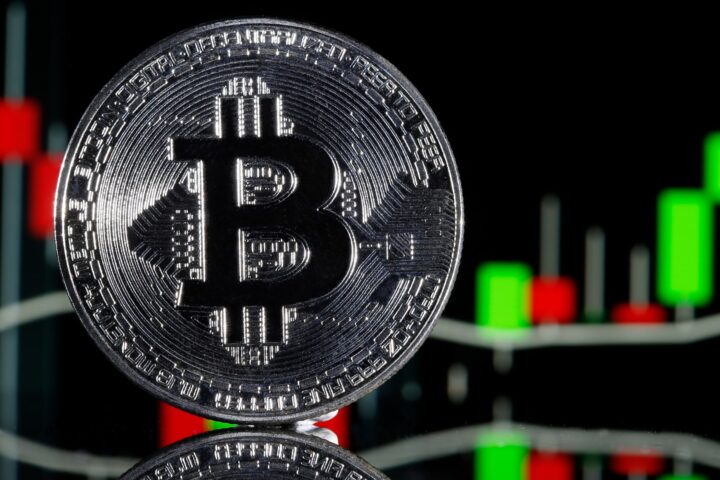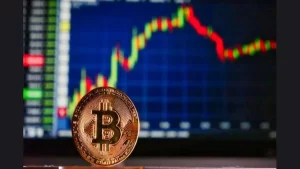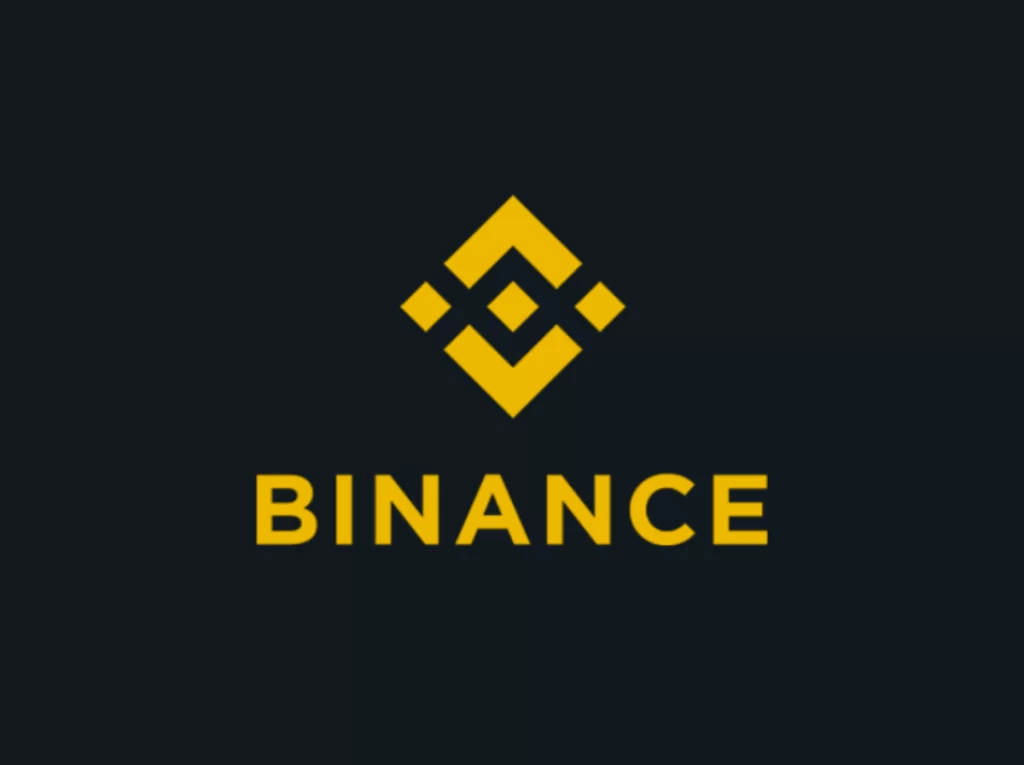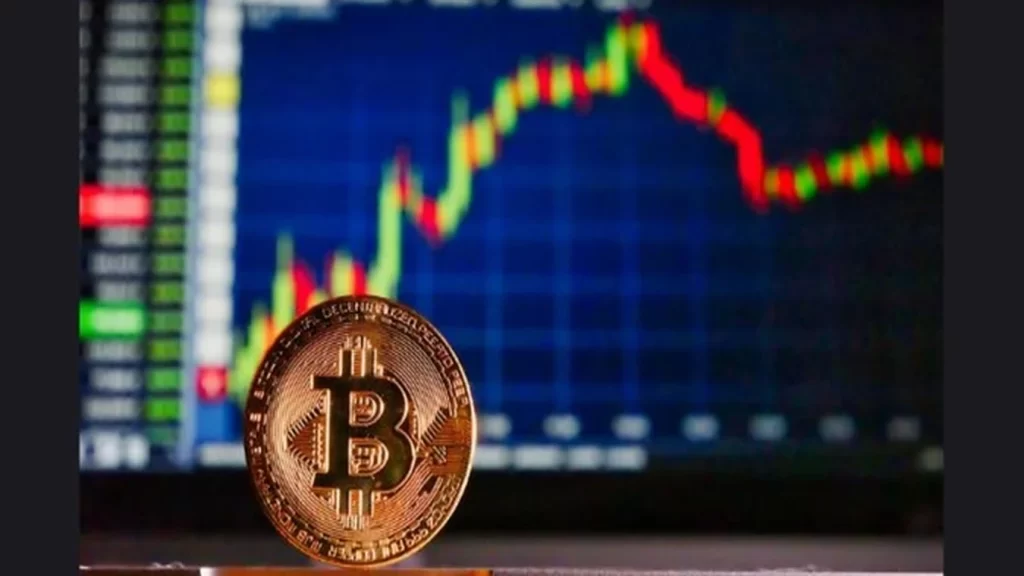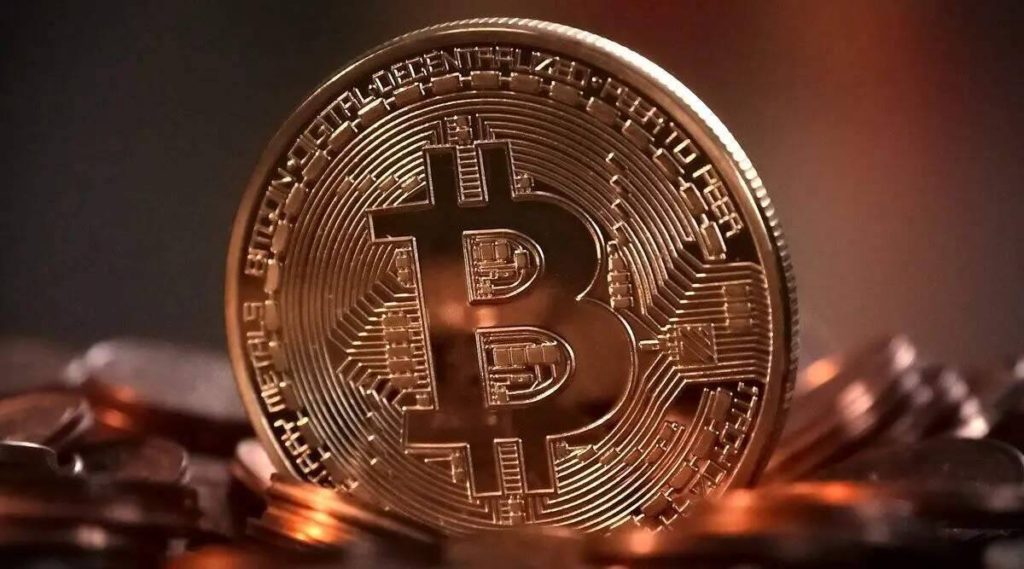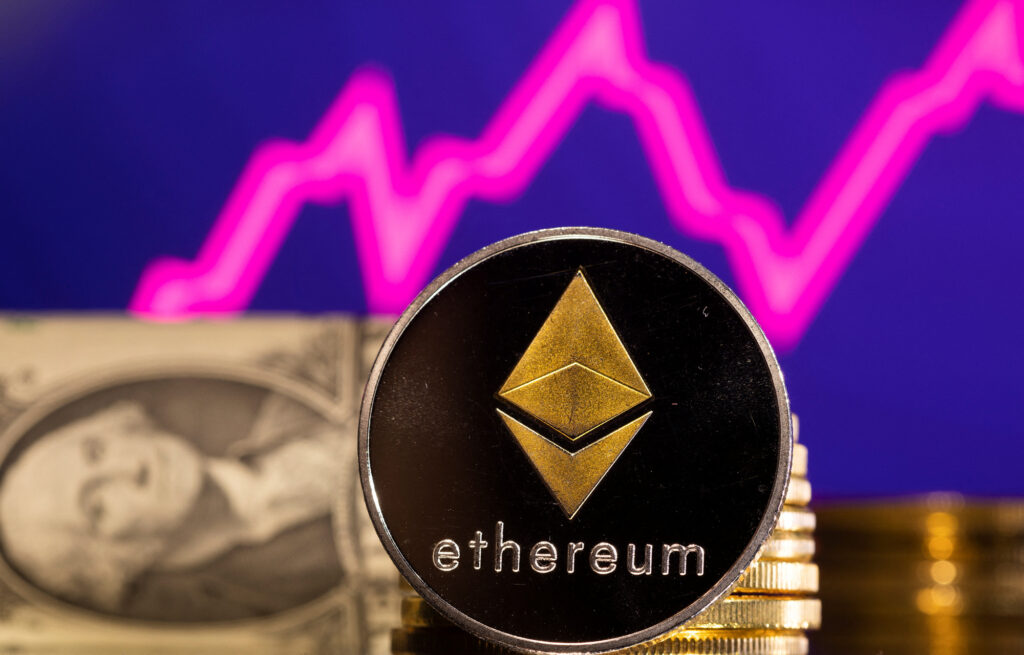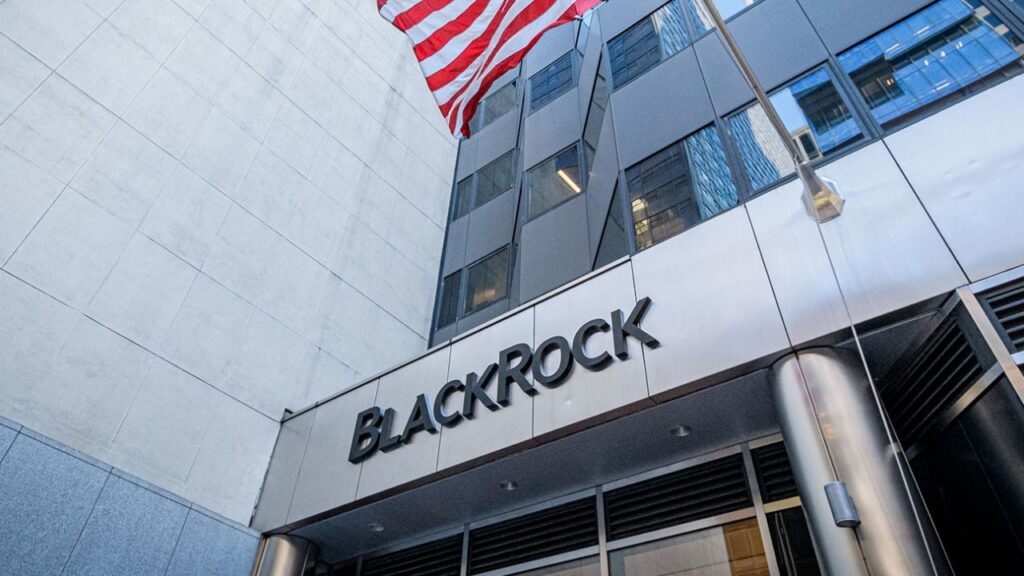Open-source generative artificial intelligence (AI) models are gaining ground, challenging the dominance of centralized cloud-backed models like ChatGPT. Leading players in the generative AI field, such as Google and OpenAI, have traditionally followed a centralized approach, restricting public access to their data sources and training models.
However, research conducted by Cathy Wood’s ARK Invest suggests a potential shift towards open-source AI models outperforming their centralized counterparts by 2024.
The graph above illustrates the progress made by open-source AI models since 2022, with some surpassing the performance of private models.
Centralized AI giants like OpenAI and Google, along with Alphabet (Google’s parent company), continue to dominate the industry with models like ChatGPT-4 and Gemini Ultra.
In contrast, Meta (formerly Facebook), Mistral, and certain Chinese AI models have embraced open-source methodologies.
In 2023, open-source AI models like Yi 34B, Falcon 180B, and Mixtral 8x7B emerged as top contenders, demonstrating comparable performance to market leaders.
Jozef Soja, a researcher at ARK Invest, highlighted that Mixtral even outperformed GPT 3.5 on a massive multitask language understanding benchmark, emphasizing the current superiority of GPT-4.
READ MORE: Senator Elizabeth Warren Gains Additional Senate Support for Crypto Anti-Money Laundering Bill
Meta’s foundational open-source model, LLaMA, also witnessed significant improvements in its 2023 iterations.
The push for enhanced performance in open-source AI models aligns with the goal of democratizing access to generative AI, as emphasized by AI engineer Brian Roemmele.
Recent tests comparing the free versions of Gemini (via Bard) and ChatGPT-4 were conducted to assess the performance of current AI market leaders.
These tests involved asking both AI models questions about cryptocurrencies and evaluating their responses.
In both cases, the AI models adopted a similar approach, cautioning users when asked about investment advice and recommending consulting professional financial advisers for personalized guidance.
Additionally, both models provided answers that highlighted similar considerations, despite presenting some differing details in certain cases.
As open-source AI models continue to evolve and narrow the performance gap with centralized counterparts, the landscape of generative AI is poised for significant changes, potentially ushering in a new era of accessibility and democratization in AI technology.
The head of the Philippines Securities and Exchange Commission (SEC), Kelvin Lee, provided clarification during a panel discussion on December 13th regarding the timeline for the ban on Binance, a popular cryptocurrency exchange.
The ban, which was initiated following an advisory issued by regulators on November 28th, is set to take effect three months after the advisory’s issuance.
There had been widespread confusion on the internet about the ban’s implementation, prompting Lee to address the matter.
He specified that the ban was originally intended to begin three months from the date of the advisory, which was issued on November 29th. Lee also indicated that, depending on feedback and circumstances, the timeline could potentially be extended.
He noted that the initial recommendation had suggested a much shorter one-month or even one-week transition period, but he decided to grant more time due to the upcoming Christmas holiday season, to avoid inconveniencing Filipino investors.
In addition to Binance, Lee disclosed that two other exchanges, OctaFX and MiTrade, had also received advisories for operating without the necessary licenses and would face bans after a three-month grace period.
READ MORE: Giddy Makes it Even Easier to Buy Crypto with Stripe Integration
The local SEC stated that it possesses a substantial list of unregistered exchanges operating within the country and would be monitoring their response to the actions taken against Binance.
Lee faced criticism for the Binance ban, with some individuals suggesting that the exchange’s services were more affordable compared to registered exchanges.
In response, he emphasized that Binance was cheaper precisely because it had not gone through the registration and compliance process required in the Philippines, unlike registered entities that incurred compliance costs.
Lee cautioned local investors to opt for registered entities, highlighting that there were 17 virtual asset service providers in the country that offered fiat-to-crypto services while adhering to regulatory standards.
He stressed the importance of registration and consumer protection, urging investors to collaborate with registered entities.
Cointelegraph sought comment from Binance regarding the situation and any potential actions or plans in response to the ban in the Philippines.
The regulatory landscape in the cryptocurrency space continues to evolve, with governments and agencies working to establish clear guidelines and ensure compliance within the industry.
Bitcoin and cryptocurrencies are poised for another surge in adoption by United States-based companies, thanks to a recent accounting rule change that enables businesses to more accurately represent the value of their crypto holdings.
Cory Klippsten, the CEO of the Bitcoin-exclusive exchange Swan Bitcoin, has emphasized the significance of this development.
He points out that companies like MicroStrategy and Tesla, both of which had to report impairment on their crypto holdings, can now provide a more precise reflection of the true value of their Bitcoin investments.
Klippsten believes that this change will have far-reaching implications, not only for companies primarily focused on Bitcoin but also for mainstream corporate adoption.
The Financial Accounting Standards Board (FASB) introduced the new rules on December 13, with an effective date of December 2024.
These rules enable companies to accurately represent the estimated market value of crypto assets on their accounting books by allowing them to record gains on these assets.
READ MORE: Blockchain Technology Emerges as a Key Player in the Battle Against Climate Change
Previously, crypto held by companies could only be impaired when its value decreased on the books, and any gains couldn’t be recognized until the crypto was sold, even if its value increased while held.
Klippsten envisions companies now being able to utilize Bitcoin as a “strategic financial asset” because they can report on both gains and losses.
This reporting feature is expected to foster greater adoption of cryptocurrencies within the corporate world.
Markus Thielen, head of research at Matrixport and author of Crypto Titans, emphasizes that this rule change highlights the growing corporate demand for incorporating cryptocurrencies into a firm’s accounting practices.
Digital assets are increasingly becoming integral to financial statements, and companies will have greater confidence in valuing their crypto holdings.
David Marcus, co-creator of Facebook’s Diem project, also expressed excitement about the rule change.
He noted that these new rules remove a significant obstacle that had been hindering corporations from holding Bitcoin on their balance sheets.
Back in September, following the FASB’s approval of these rules, Mark Palmer, senior equity research analyst at Berenberg Capital, highlighted that crypto-holding companies can now eliminate the negative optics associated with impairment losses under the previous rules.
This change is expected to encourage more companies to embrace cryptocurrencies as part of their financial strategies, marking a significant milestone in the integration of digital assets into the financial landscape.
Bitcoin is on the verge of reaching an unprecedented milestone, as Bitwise, a senior research analyst, predicts that the cryptocurrency will achieve a new all-time high of $80,000 in 2024.
This bullish projection is part of a larger set of predictions for the crypto industry in 2024, as outlined by Bitwise’s Ryan Rasmussen in a post on X (formerly Twitter) on December 13.
One of the standout trends in these predictions is the remarkable growth of the stablecoin industry. Bitwise anticipates that stablecoins will soon surpass Visa’s payment volume, recognizing these dollar and asset-pegged tokens as one of crypto’s most significant innovations.
By the third quarter of 2023, Visa had processed over $9 trillion in payments, while stablecoin trading volume had already exceeded $5 trillion.
Rasmussen highlighted the remarkable rise of stablecoins, with their market capitalization growing from nearly nothing to a staggering $137 billion within just four years.
Given this trajectory, he expects stablecoins in 2024 to continue expanding in both trading volume and utility.
Bitwise’s optimism regarding stablecoins is not unique, as Circle CEO Jeremy Allaire also expressed confidence in their growing demand.
Allaire noted the increasing appetite for internet-enabled digital dollars, emphasizing the need for such a secure and accessible digital currency.
Furthermore, asset manager Van Eck predicts that the total stablecoin market capitalization will reach $200 billion by the end of 2024.
READ MORE: Giddy Makes it Even Easier to Buy Crypto with Stripe Integration
Rasmussen also foresees a prosperous year ahead for Bitcoin, projecting a price exceeding $80,000 in 2024.
He attributes this optimism to the anticipated launch of the first spot Bitcoin exchange-traded fund (ETF) and the upcoming halving event in April, both of which are expected to drive significant price growth.
However, Bitcoin price predictions for 2024 vary widely among analysts and experts.
Some anticipate an average price of at least $100,000, while others set targets as high as $250,000 or even $1 million.
Bitwise speculates that not only will the spot Bitcoin ETF be approved, but its launch will be the most successful ETF launch in history, amassing $72 billion in assets under management within the next five years.
Bitwise is among 13 financial institutions seeking approval for a spot Bitcoin ETF from the United States Securities and Exchange Commission.
In addition to Bitcoin, Ethereum is poised for substantial improvements in 2024, with Bitwise expecting a 100% increase in revenue to $5 billion.
This prediction hinges on the EIP-4484 upgrade, which could reduce gas costs on the Ethereum network to below $0.01.
Beyond crypto assets, Coinbase is predicted to thrive during the anticipated bull market of 2024, with Bitwise forecasting a remarkable 100% growth in revenue for the exchange platform, surpassing Wall Street’s expectations tenfold.
Bitcoin is showing promising signs of a new bull run, with daily gains of 7% driving its price higher. This surge in price follows a brief sell-off, and on-chain metrics suggest that the upward momentum may continue.
After reaching $44,000 earlier in the month, Bitcoin experienced a cooling-off period, dropping to nearly $40,000. However, conditions have since improved.
Philip Swift, the creator of Look Into Bitcoin, pointed out on December 13 that profit-taking has increased as BTC/USD reached its highest levels in 19 months.
He highlighted the “Value Days Destroyed” (VDD) metric, which measures Bitcoin selling activity based on the age of the coins being sold and the current BTC price.
On December 11, VDD reached its highest level since May 2021, indicating that some long-term holders (HODL’ers) are taking profits.
Recent selling activity has been driven by short-term holders (STHs), who are typically more speculative in their trading approach.
READ MORE: Bitcoin’s Resilience Shines Amidst Price Correction – Bulls Eye $44,000 Breakout
Meanwhile, analysts see potential for Bitcoin’s price to continue rising towards the key resistance level around $50,000.
Matthew Hyland, an analyst, pointed to the relative strength index (RSI) on daily timeframes, which has displayed a bullish divergence with price, indicating potential upward movement.
Additionally, there is a notable influx of capital into both Bitcoin and Ethereum, reminiscent of late 2020 when Bitcoin first broke the $20,000 mark and entered a phase of price discovery.
This renewed interest from investors suggests confidence in the cryptocurrency market.
Social media commentator Ali expressed optimism about the current market conditions, echoing the sentiment that significant capital inflows are returning to both Bitcoin and Ethereum.
Others share this bullish outlook, with BitQuant emphasizing that Bitcoin could break through the $42,000 to $45,000 channel by the end of the coming week, with no strong resistances in sight until the $63,000 mark.
In summary, Bitcoin is showing signs of a robust bull run, with on-chain metrics, profit-taking, and increased capital inflows contributing to its recent price surge.
Analysts and commentators are optimistic about the cryptocurrency’s potential to continue its upward trajectory, with key resistance levels in focus as Bitcoin aims for new all-time highs.
The United States Securities and Exchange Commission (SEC) has announced a delay in its decision-making process regarding the approval or disapproval of a spot Ether exchange-traded fund (ETF) proposed by Invesco and Galaxy Digital.
In a notice dated December 13, the SEC revealed its intention to extend the evaluation period for a proposed rule change that would permit the Cboe BZX Exchange to list and trade shares of the Invesco Galaxy Ethereum ETF.
This proposed ETF represents just one of several cryptocurrency investment vehicles currently under the SEC’s consideration. Up to this point, the SEC has never granted approval for an ETF with direct exposure to Bitcoin or other cryptocurrencies.
The initial deadline for the decision on this proposed rule change was set for December 23, 2023, but the SEC has now designated February 6, 2024, as the new deadline for either approval, disapproval, or the initiation of proceedings to determine whether to disapprove the proposed rule change.
Invesco and Galaxy Digital submitted their application for a spot ETH ETF in September, following the reactivation of their application for a spot Bitcoin ETF in June.
READ MORE: Giddy Makes it Even Easier to Buy Crypto with Stripe Integration
Some experts have speculated that if the SEC eventually approves a spot crypto ETF, whether it involves Bitcoin or Ether, it may lead to simultaneous approvals of similar funds from various other financial firms.
As of the latest available information, multiple firms have submitted applications for spot crypto ETFs, including BlackRock, Hashdex, ARK 21Shares, VanEck, and Fidelity.
The SEC has been actively engaged with these asset managers, as evidenced by recent memos released over the past 30 days, which indicate that representatives from these firms have met with SEC officials to discuss their ETF offerings.
In summary, the SEC’s decision to delay the approval or disapproval of the Invesco Galaxy Ethereum ETF highlights the ongoing regulatory scrutiny and careful evaluation of cryptocurrency-based financial products in the United States.
The outcome of this decision could potentially set a significant precedent for the future of cryptocurrency ETFs in the country.
Elon Musk, the CEO of Tesla and executive chair of X (formerly Twitter), has unveiled the latest iteration of Tesla’s humanoid robot, Optimus Gen 2.
This cutting-edge robot, showcased in a video presentation on Musk’s X account on December 13, boasts impressive improvements over its predecessor.
One of the standout features of Optimus Gen 2 is its reduced weight, coming in at 22 pounds lighter than the original Optimus Gen 1 model.
In addition to shedding the excess weight, the new robot has undergone significant advancements in its design.
Its foot construction now closely mimics human anatomy, enhancing its overall balance and full-body control.
This improvement is showcased in the video as Optimus Gen 2 confidently performs a series of squats.
Another remarkable upgrade in this new robot is its tactile sensing capabilities on all fingers.
Optimus Gen 2 can delicately manipulate objects, as evidenced in the video when it effortlessly picks up and then places down an egg, highlighting its dexterity.
READ MORE: El Salvador’s “Volcano Bonds” Approved for 2024 Launch
Tesla’s foray into humanoid robots began in 2022 with the unveiling of the first Optimus prototype.
This early version struggled to move forward and had its inner workings exposed.
Subsequent iterations required assistance from human operators to maintain their balance.
However, in the spring of 2023, Musk released a video showcasing the next generation of Tesla-built robots, demonstrating their significantly improved mobility and object manipulation skills.
Elon Musk has been a vocal advocate for increased regulatory oversight of artificial intelligence (AI), expressing concerns that AI could surpass human capabilities in the future.
He even went so far as to suggest that a “digital god” would render copyright lawsuits related to AI irrelevant.
Musk has previously predicted that artificial general intelligence would emerge before 2030, although this estimate has been met with skepticism by many industry experts who view it as overly optimistic.
In conclusion, Elon Musk’s unveiling of the Optimus Gen 2 humanoid robot marks a significant step forward in the development of AI-driven robotics.
With its lighter weight, improved balance, and enhanced dexterity, this robot showcases Tesla’s commitment to pushing the boundaries of technology and AI, while Musk continues to advocate for responsible AI development and regulation.
Binance Holdings and its former CEO, Changpeng Zhao, have responded to a recent development in their legal battle with the United States Securities and Exchange Commission (SEC).
The SEC sought to include Binance’s admission of guilt to the Department of Justice (DOJ) in its ongoing legal proceedings.
In a filing submitted on December 12th to the U.S. District Court for the District of Columbia, Binance firmly contested the SEC’s move, arguing that it was procedurally incorrect and should be disallowed.
The legal dispute between Binance and the SEC commenced on June 5, 2023, when the SEC levied accusations against the company, alleging 13 violations of securities laws.
Among these allegations were claims that Zhao and Binance had mishandled customer assets on Binance.US and engaged in the improper mixing or redirection of these assets.
In November, the DOJ reached a separate settlement with Binance and its former CEO, effectively resolving its investigation into the company.
The terms of the agreement required Binance to pay a substantial $4.3 billion in penalties while permitting the company to continue its operations while complying with U.S. regulatory standards.
READ MORE: Solana’s Bonk (BONK) Emerges as Third-Largest Memecoin, Surpassing Pepe in Market Cap Surge
Although the SEC was not formally included in this settlement, the agency contended that the federal court overseeing its case against Binance should take into account the statements and acknowledgments made by Binance and Zhao during the November settlement.
The SEC’s argument was that these settlements demonstrated Binance’s awareness of its U.S. operations, its service to U.S. customers, and its reliance on U.S. infrastructure for transactions.
Binance, in response, contended that the SEC had failed to establish how the resolutions with the DOJ were relevant to the SEC’s allegations against Binance Holdings and Zhao.
In their court papers submitted on December 12, 2023, Binance argued that the SEC’s notice did not provide substantiation for the claims made in the original lawsuit from June 2023.
They stated that the SEC’s notice was essentially an impermissible attempt to introduce new factual information and arguments rather than citing new legal authority, which was reason enough to disregard it.
Furthermore, Binance asserted that presenting a judicial notice should not be seen as a substitute for amending a complaint.
According to the company, the SEC’s attempt to leverage settlements with other agencies indicated a lack of clarity regarding the appropriate regulatory jurisdiction within the SEC’s purview.
OKX, the decentralized exchange (DEX), fell victim to a $2.7 million hack on December 13, when it was discovered that the private key of the proxy admin owner had been compromised.
The incident was first brought to light by SlowMist Zone, a blockchain security firm, in a post on X (formerly Twitter).
According to their report, the issue began on December 12, 2023, around 10:23 pm when the proxy admin owner upgraded the DEX proxy contract to a new implementation contract.
This upgrade triggered a series of events in which a user started stealing tokens from the platform.
Around 11:53 pm, the proxy admin owner made another contract upgrade, but the user continued to exploit tokens.
SlowMist Zone suggested that the attack might be linked to the alleged leakage of the proxy admin owner’s private key. Subsequently, OKX DEX removed the DEX proxy from its trusted list.
Scopescan, an on-chain analysis firm, also reported the attack and mentioned that users had reported the event.
READ MORE: SBI Holdings and Saudi Aramco Explore Digital Asset and Semiconductor Collaboration
After contacting OKX DEX, they were informed that an old abandoned contract had been attacked but was subsequently located and stopped.
The DEX assured users that any losses resulting from the hack would be fully covered.
The hack resulted in a total loss of approximately $2.7 million in various cryptocurrencies, according to PeckShield, another blockchain security company.
They advised users to “revoke allowances” if necessary.
In response to the incident, some users highlighted the misconception that decentralized platforms are immune to security breaches.
They emphasized the importance of caution in the decentralized space, as demonstrated by the OKX DEX hack.
The cryptocurrency industry has suffered significant losses throughout the year, with approximately $1.5 billion attributed to hacks, exploits, and scams up until September 2023.
In the fourth quarter, other platforms like Poloniex and the HECO Chain bridge also experienced substantial losses due to exploits and hacks.
Coinelegraph reached out to OKX for further details regarding the exploit, seeking clarification and additional information on the incident.
BlackRock has made a significant alteration to its Bitcoin exchange-traded fund (ETF) application, aiming to facilitate participation by major Wall Street banks.
This change involves the creation of new fund shares using cash, rather than relying solely on cryptocurrency assets.
The innovative “in-kind redemption prepay” model is designed to enable banking giants like JPMorgan and Goldman Sachs to become authorized participants in the fund.
This would allow them to bypass restrictions that currently prohibit them from directly holding Bitcoin or other cryptocurrencies on their balance sheets.
This transformative model was presented jointly by six members of BlackRock and three from Nasdaq during a meeting held on November 28th with the United States Securities and Exchange Commission (SEC).
If granted approval, this development could prove to be a game-changer for Wall Street institutions with trillion-dollar balance sheets, as it opens up a new avenue for their involvement.
Many highly regulated banks are presently barred from directly holding cryptocurrencies.
Under the revised model, authorized participants (APs) would transfer cash to a broker-dealer, which would then convert it into Bitcoin before entrusting it to the ETF’s custody provider, Coinbase Custody in BlackRock’s case.
This arrangement also effectively shifts risk away from APs and places it more in the hands of market makers.
READ MORE: El Salvador’s “Volcano Bonds” Approved for 2024 Launch
Furthermore, BlackRock asserts that this new model enhances resistance to market manipulation, which has previously been a key factor in the SEC’s rejection of spot Bitcoin ETF applications.
Additionally, BlackRock contends that the new ETF structure will bolster investor protections, reduce transaction costs, and promote simplicity and consistency within the broader Bitcoin ETF ecosystem.
According to a filing with the SEC, BlackRock had its third meeting with the SEC, led by Gary Gensler, on December 11.
Notably, this meeting on November 28 with the SEC was a follow-up to an initial meeting held on November 20, where BlackRock introduced its original in-kind redemption model.
The SEC is obligated to make a decision on BlackRock’s application by January 15, with the final deadline set for March 15.
In the meantime, ETF analysts anticipate that the SEC will issue decisions on several pending spot Bitcoin ETF applications sometime between January 5 and 10.
Grayscale, Bitwise, VanEck, WisdomTree, Invesco Galaxy, Fidelity, and Hashdex are among the other financial firms eagerly awaiting the SEC’s decisions during this period.

